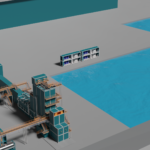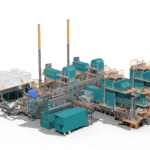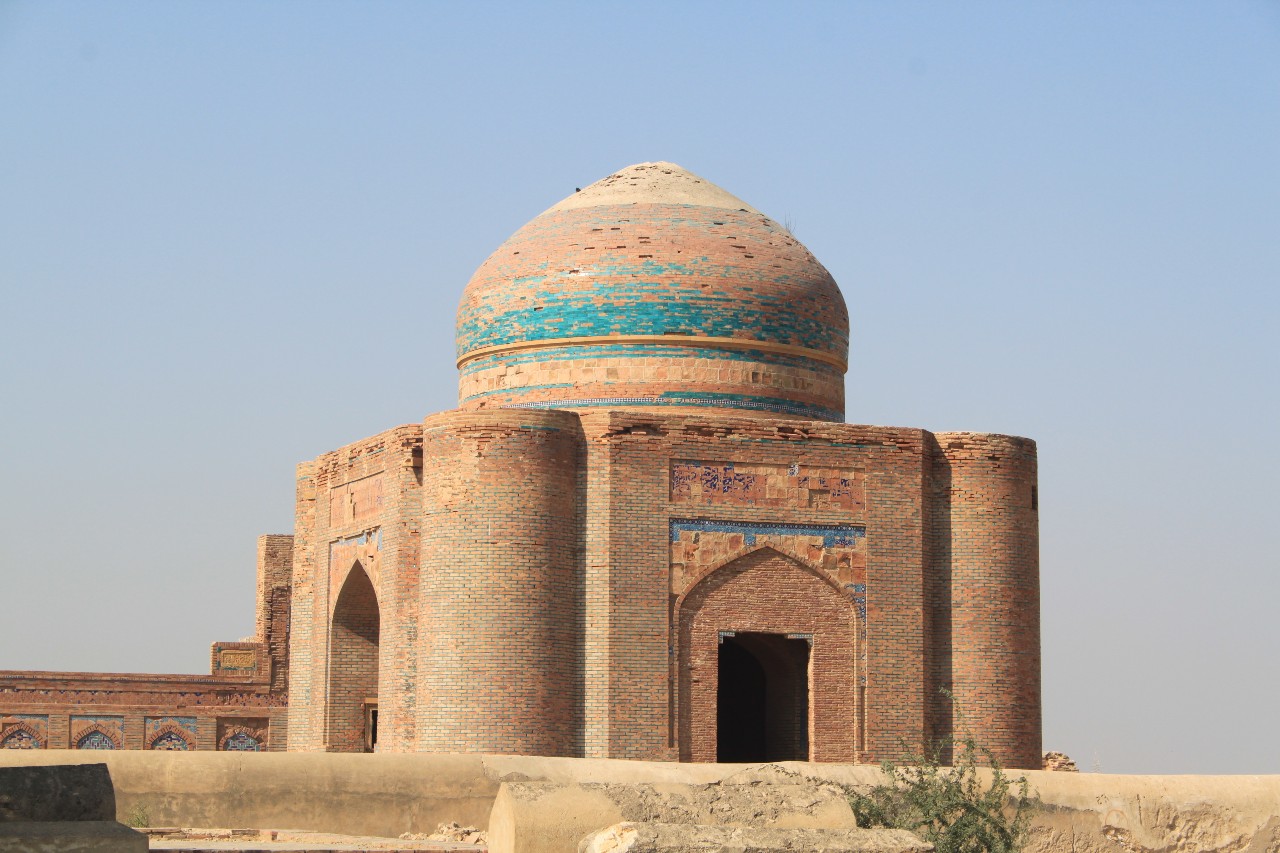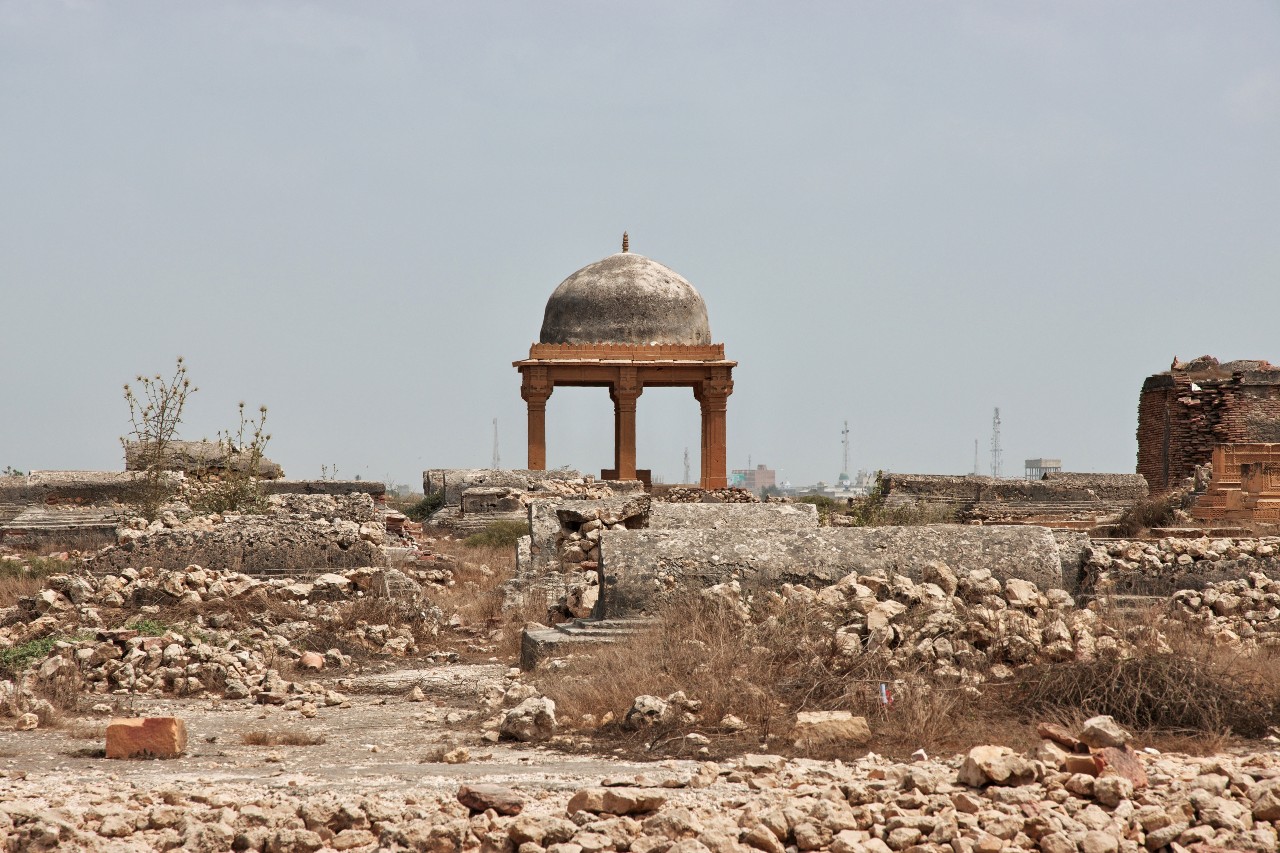Near the apex of the delta of the Indus River in Pakistan’s southern province of Sindh is an enormous cemetery possessing half a million tombs and graves in an area of about 10 km2. Massed at the edge of the 6.5 km-long plateau of Makli Hill, the necropolis of Makli, it testifies in an outstanding manner to the civilization of the Sindh. It was associated with the nearby city of Thatta, once the capital and center of Islamic culture. The capital of three successive dynasties and later ruled by the Mughal emperors of Delhi, Thatta was constantly embellished from the 14th to the 18th century.
The vast necropolis of Makli is among the largest in the world. Kings, queens, governors, saints, scholars, and philosophers are buried here in brick or stone monuments, some of which are lavishly decorated with glazed tiles. Among the outstanding monuments constructed in stone are the tombs of Jam Nizamuddin II, who reigned from 1461 to 1509, and of lsa Khan Tarkhan the Younger and of his father, Jan Baba, both of whose mausolea were constructed before 1644. The most colorful is that of Diwan Shurfa Khan (died in 1638).
The unique assemblage of massive structures presents an impressive order of monumental buildings in different architectural styles. These structures are notable for their fusion of diverse influences into a local style. These influences include, among others, Hindu architecture of the Gujrat style and Mughal imperial architecture. Distant Persian and Asian examples of architectural terra-cotta were also brought to Makli and adapted. An original concept of stone decoration was created at Makli, perhaps determined by the imitation of painted and glazed tile models. The historical monuments at the necropolis of Makli stand as eloquent testimonies to the social and political history of the Sindh.
Within the boundaries of the property are located all the elements and components necessary to express the Outstanding Universal Value of the property, including the tombs and graves located in the necropolis of Makli. Nevertheless, a number of the historical monuments have reached an advanced stage of degradation. The integrity of the property is threatened by the significant decay caused by the local climatic conditions (earthquakes, variations in temperature, winds containing salts and humidity, heavy rains, natural growth) and the shift of the riverbed. In addition, encroachments, waste depositions and vandalism threaten the site, and damage and loss by pilferage have assumed colossal proportions.
Pakistan contributes less than 1% of the world’s greenhouse gases blamed for causing global warming, yet its 200 million people are among the world’s most vulnerable victims of the growing consequences of climate change. The nation is facing ever-rising temperatures, drought and flooding that threaten health, agriculture, water supplies and hopes for development of a society that ranks in the bottom quarter of nations, based on income per person. Pakistan is among 10 countries affected most by climate change, according to the 2018 Global Climate Risk Index.
The wasteWOIMA® waste-to-energy power plant uses municipal solid waste as fuel thus reducing the need to dump it elsewhere. It is a carbon-neutral solution that simultaneously ensures that waste is recycled into energy efficiently, supports the local waste management practices and promotes climate action by preventing solid waste from generating methane, a greenhouse gas 25 times worse than CO2.
Read more about wasteWOIMA® power plant
Contact WOIMA, if you see yourself as collaboration partner in saving the planet. Ask more about turning waste into wellbeing with WOIMA Circular Economy Solutions.






